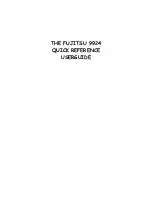
53
Setting up a SIP server
When making the entry, use the asterisk button to switch between different styles of writing: Let-
ters, numbers or IP addresses. In the “IP address” mode you can enter a dot using the pound button.
Registrar
: If the registrar is not the same as the SIP proxy, its address can be entered here. If this field
is empty, the SIP proxy will also be used as the registrar. Therefore in normal configuration, this field
can be left empty (for entry format see SIP server example).
Outbound proxy
: An outbound proxy can be configured here. This can be necessary, e.g. if the hand-
set cannot solve the DNS names itself as a result of its configuration. The outbound proxy will be
entered as an IP address, or if necessary as an IP address:port. In most cases, this field can be left
empty.
User ID
: This is the SIP user ID. This is normally the call number of this device. However, it is also pos-
sible to have a user ID that is not just made up of numbers.
Authentication name
: Is used for authentications. May remain blank if the system does not require
an authentication or if the authentication name is the same as the user ID.
SIP password
: This is used for authentications. Can be left empty if the system does not require any
authentication. This password is used independently of the inquired realm, as it is not necessary to
enter a realm.
Pref. codec
: The voice codec, which should preferably be used. It influences the sound quality and
also the bandwidth used on the network. If there is no particular reason to make a change, it is rec-
ommended to use the preset G.711.
DTMF method
: It is possible to set for a SIP profile, how DTMF (MFV) will be transmitted.
Using the left softkey
select . . .
RFC 2833
(default setting): Transmits DTMF in the RTP stream according to RFC 2833 after
the package type negotiated via SIP/SDP. If the package type is not negotiated, “Inband”
will be used automatically.
SIP-INFO
: DTMF will be transmitted via SIP Info messages (no standard, however widely
accepted). This setting should be used if RFC 2833 is not supported.
RFC + INFO
: Both transmission types are activated. Please note: Possibly, the other party
recognises numbers twice.
Example
: 172.30.203.12
172.30.203.12:6200
Example: sip.aastra.com
sip.aastra.com:8200
172.30.203.12:8200
Summary of Contents for 312 RELEASE NOTES
Page 1: ...Aastra Phone 312 User Guide...
Page 81: ...75...
















































